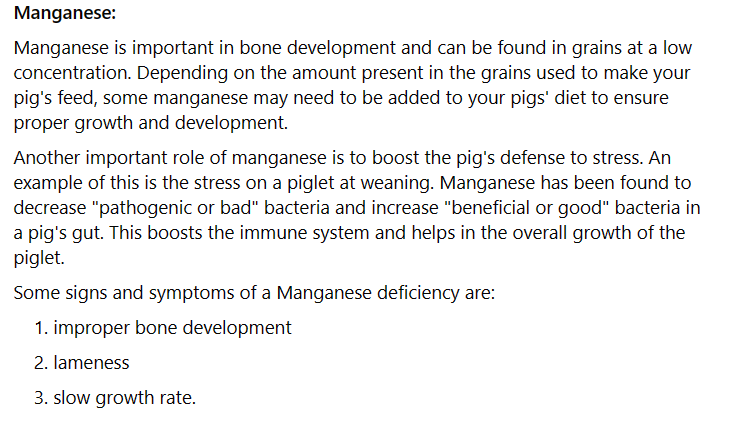Minerals
Importance of Minerals
When a pig becomes deficient in any mineral, they start to crave that mineral. The pig’s body naturally wants more. Minerals are found in the dirt, so it only makes sense that the pigs will then start to dig in the ground to get more minerals. Most of the ground in the United States is extremely deficient in selenium, so a deficiency of selenium in your pig will be noticed sooner than most other mineral or vitamin deficiencies. Pigs with a deficiency of any mineral will start rooting in the dirt to try to get the additional minerals even if they have never rooted before.
Depending on how you feed your pigs, will determine how you need to mix your minerals into the feed. Idaho Pasture Pigs are able to eat primarily grass, so they can eat a small amount of grain per day and do very well. Commercially raised pigs are fed free-choice feed each day, so the minerals mixed into feed for traditional pigs is not mixed at a high enough rate for primarily grass-fed pigs. Unfortunately, not all swine minerals sold in the United States contain the same amount of minerals. For that reason, it is very important that you get a mineral mix that contains the necessary minerals. Here is an example of the NexGen 2090 swine mineral tag that we have personally used for many years now. This mineral mixed at a rate of 100 pounds per ton of feed has been proven to provide the proper amount of minerals for primarily grass-fed Idaho Pasture Pigs. We have found that when mixed to this ration, this provides our pigs with the necessary minerals they need when feeding about 10 – 20% of grain a day. This means that 80- 90% of the diet for an Idaho Pasture Pig can be grass/hay or fodder. Across the United States the mineral content of the soil will vary, this also means that the grains and grasses grown in this soil is also going to vary. A deficiency will carry over into everything grown in that deficient soil, so it is important that you check the mineral content of your soil for a more exact amount of minerals needed.
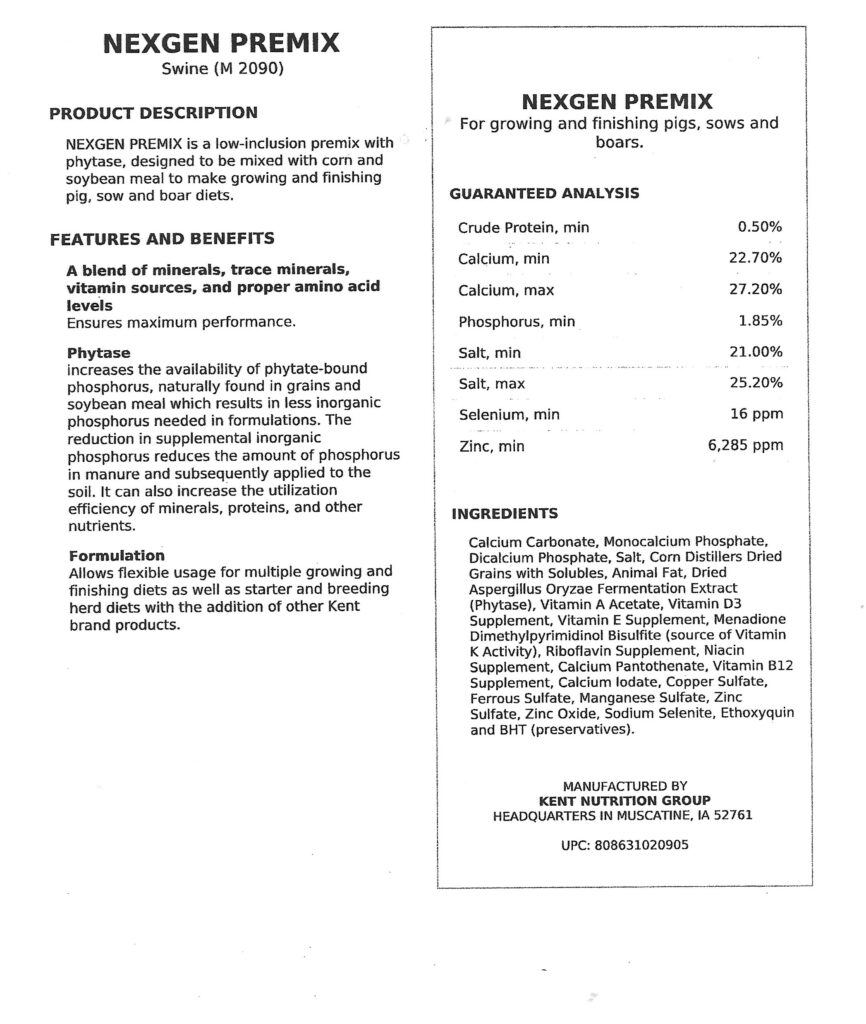
Mineral Supplements and Feed Locations Across the United States
Special Note: All information has been found to work for breeders in these areas but is not a 100% guarantee that it is perfect for your pigs. Consulting a nutritionist is the only way to know exactly what minerals you need for your pigs in your area. For ALL of these feeds, unless otherwise noted, the pigs are getting hand fed 2 – 6 pounds of feed each day based on time of year, weather conditions, age, grass/legumes availability, body condition, and whether the gilt/sow is pregnancy or lactating.
Idaho Pasture Pig Minerals Across the United States
Idaho Pasture Pig Complete Feed Across the United States
Why minerals are important!
We talk a lot about the Idaho Pasture Pigs needing their minerals mixed at a higher dose when hand feeding (as is highly recommended for your Idaho Pasture Pigs). But now I would like to go through the “Why” of the importance for your pigs’ health. In the next few pictures, I have listed a few minerals and explained the importance of this mineral in a pig’s diet. I have listed some signs and symptoms of what you may see if you have deficiency or a toxicity of that specific mineral. It is important to remember that across the United States the minerals in the soil are different and along with that, you absolutely must also take into account your personal feeding regiment. Personally, we want to feed a minimal feed and then have our pigs gaining the rest of their nutrients and food from grasses, legumes, hays, fodder, and other veggies and fruits. That doesn’t mean you have to feed exactly the same way, but is does mean that you must pay attention to how much you are feeding and take that into account when providing minerals. Pigs fed like commercial pigs and given free-choice feed will not need the increased mineral in their diet. (nor will they gain the benefits of a primarily grass-fed diet)
Selenium
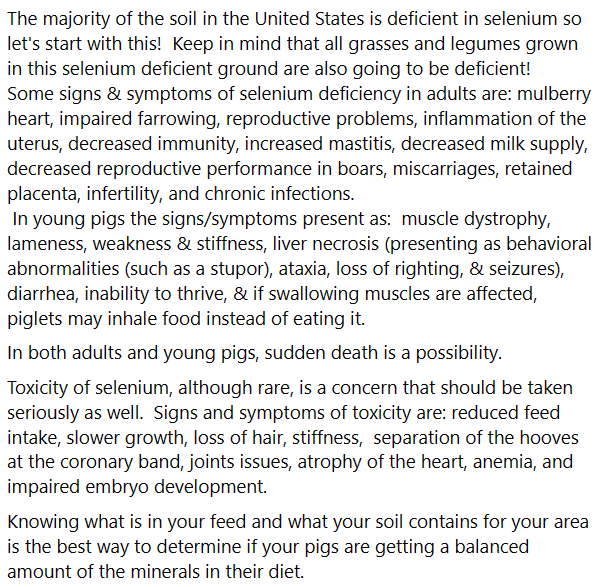
Salt
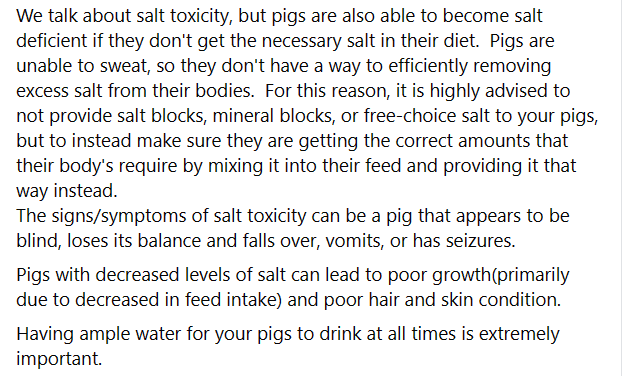
Calcium & Phosphorus
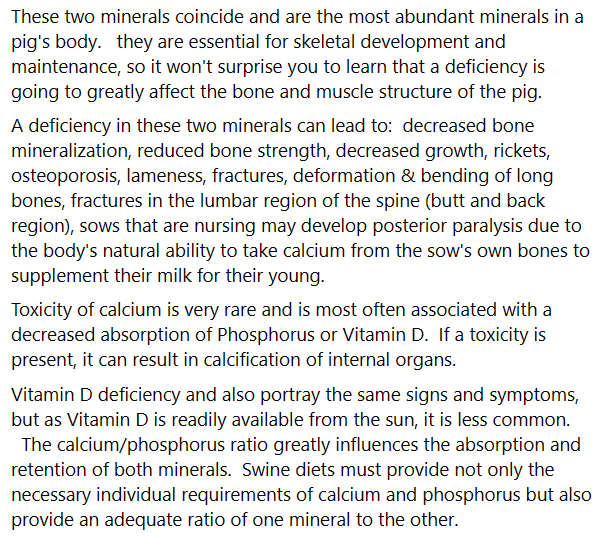
Zinc
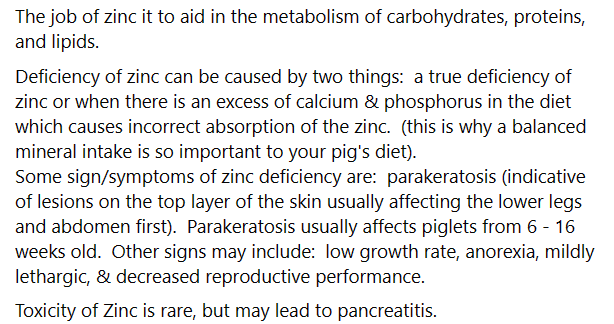
Copper & Iron
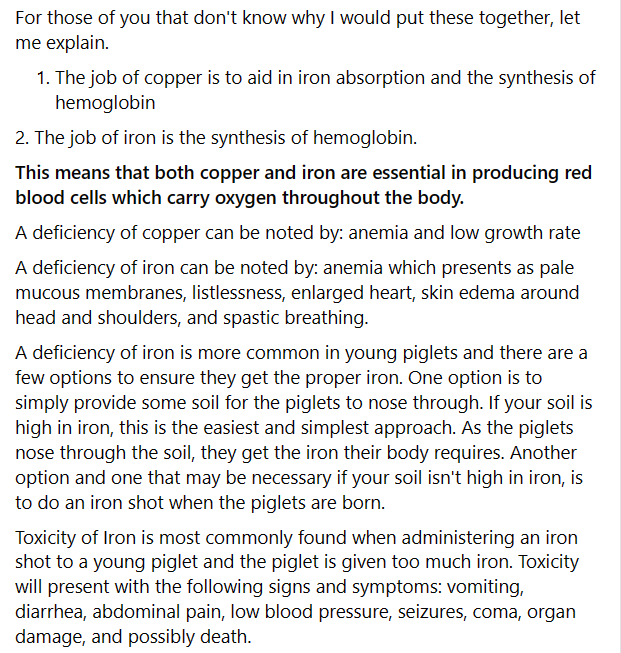
Manganese
